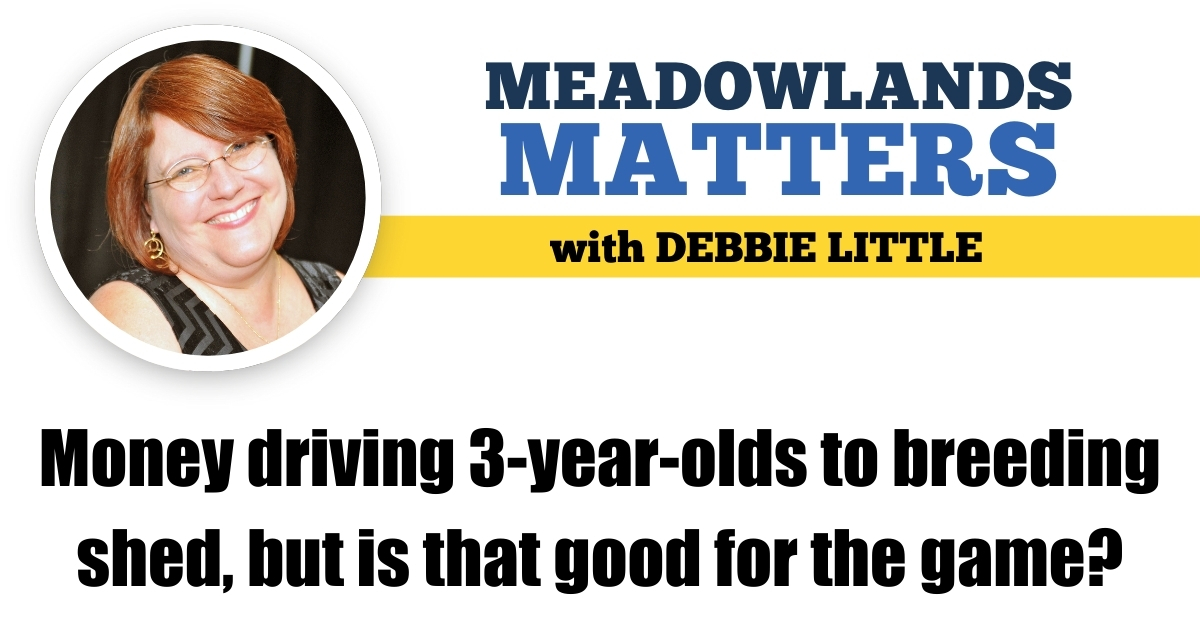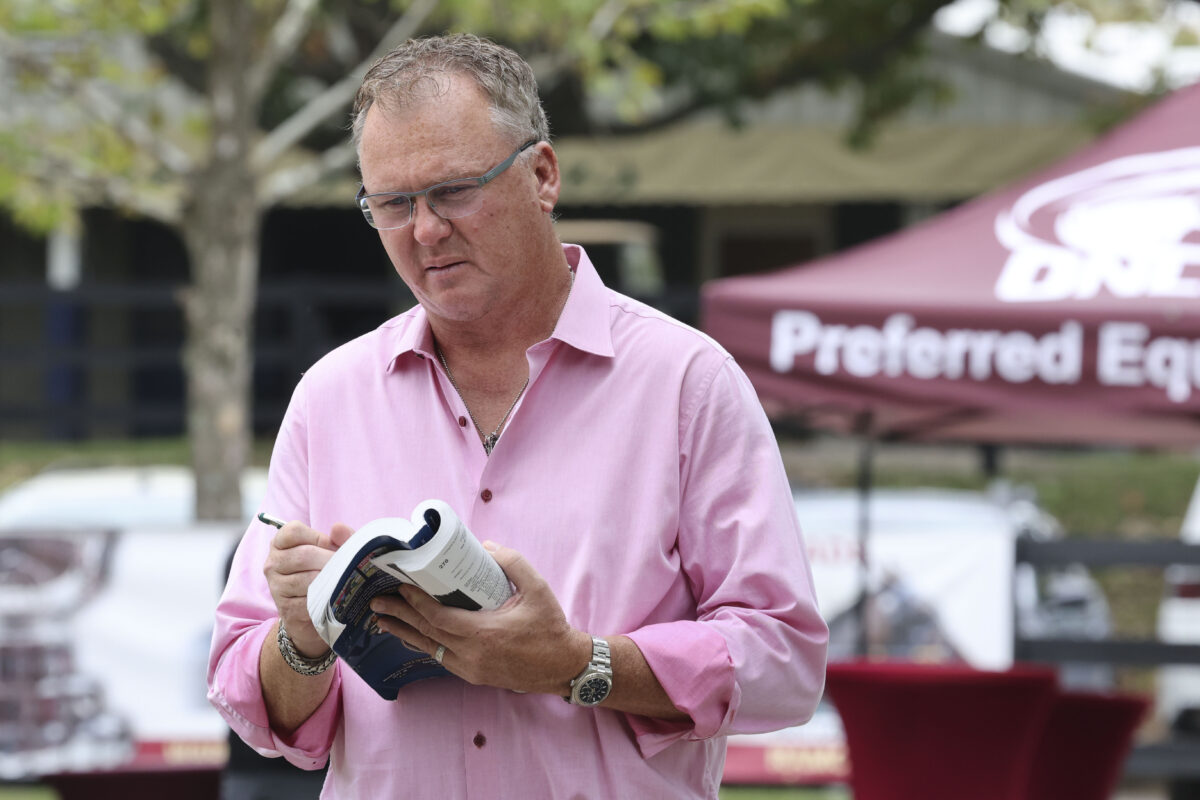Money driving 3-year-olds to breeding shed, but is that good for the game?
Ron Burke and Harvey Fried explain why retiring a star after its 3-year-old season makes the most financial sense for them. But Jeff Gural is adamant it will be a contributing factor in the death of the sport.
by Debbie Little
With so many high profile 3-year-olds retiring recently, it begs the question, why now?
That answer could be attributed, at least in part, to how successful yearling sales have been over the last few years.
“The breeding end is stronger than the racing end,” said trainer/owner/breeder Ron Burke. “I don’t understand how it’s so strong, but I don’t want to knock it.”
Burke’s 3-year-old colt trotter T C I, as well as rivals Karl and Sig Sauer, have retired to stud as has Meadowlands Pace champ Legendary Hanover, soon to be joined by Little Brown Jug champ Captain Albano.
“Nobody wanted to race T C I more than me,” Burke said. “I feel like I could show that he is the best of those horses, there’s no doubt in my mind. But, do you know what it’s going to cost me to show that?
“You know, my owners aren’t into just pumping up my ego, they’re interested in making money and in Ohio, he’s going to be warmly welcomed. He’ll take in over a million dollars easy as a stud. You know how hard it is to make a million as a 4-year-old trotter? That’s just what it comes down to. We all make our own decisions and it’s based on pure economics.
“Listen, nobody wants to race more than me. I am the all-time let’s go and race, but at some point, the margin of profit has gotten smaller here. We decided to syndicate [T C I] on a Monday morning and we decided how many shares we’d sell. Three of us calling, we didn’t use an agent, we had it done in like 25 minutes. So, where is the gain for us [in racing]? Believe me, I was trying to come up with where the gain was, trying to show them because I wanted to race.”
Patricia Stable’s Harvey Fried co-owns both Sig Sauer and Captain Albano.
“Sig Sauer is definitely done,” Fried told HRU on Saturday (Nov. 9). “In fact, his semen is being tested as we talk. ‘Albano’ has one race left in the Progress at Dover and he’s done.
“[Sig Sauer] actually came out of that last race [a win in the Breeders Crown final] with a chip fracture in his left leg, so he probably could not come back as a 4-year-old anyway. And Albano, it just becomes a matter of semantics and money… and we’re prepared to accept the one year that they would lose [due to the Gural Rule] for the benefit of the long haul right now.
“Again, that’s always been the problem in our industry, the 4-year-old racing is very difficult. There’s just not a lot of money to do it. I also owned Pebble Beach and we did the same thing with him, you know, we stopped him, too. And so, you give up the one year and that’s pretty much how you do it.”
The Meadowlands’ Stallion Restriction Condition, better known as the “Gural Rule,” bans the first crop of stallions that did not race at 4, from competing in specific Meadowlands races as 2- and 3-year-olds. However, exemptions to the SRC can and have been granted in the past should specific conditions be met, such as an injury/condition that prevents a horse from continuing to compete or would make it dangerous to do so.
It’s unclear at this point how many might file for an exemption, and although Burke said he doesn’t think he will, you never know.
“I could make the case and I don’t know if any vet would feel comfortable saying I was incorrect, you know what I mean?” Burke said of T C I, without going into specifics.
Fried said he was not surprised that so many top 3-year-olds are retiring.
“Only because the cost to keep horses between training the horse, insuring the horse, the vet work, is outrageous,” Fried said. “So, you start to analyze, ‘How much is this costing me to keep going and how much could I make?’ I mean, that’s kind of really what it breaks down to.
“Listen, ‘Albano’ is going to Blue Chip, ‘Sig’ is going to Hanover; I mean, you can’t get better than those.
Sig is being done through Dr. J’s [Dr. Bridgette Jablonsky] syndicate. And it’s been so unbelievable the response to him, that [Dr. J] actually is not promising anybody more than one share of the horse. We only have 60 and she’s been asked about 54 already and he hasn’t even hit the market yet.
“But, you know, he’s going to Hanover; he’s a Muscle Hill and they have no more Muscle Hills there, and he’s a big, strong, strapping guy. I think he could possibly win the 3-Year-Old Trotter of the Year. I think he should, quite frankly. He’s won the Kentucky Futurity, he’s won the Breeders Crown, he’s beaten Karl three times. Whatever it is, it is, and I’ll accept whatever it is, but I think he should be the 3-Year-Old Trotter of the Year.”
This mass exodus of top sophomore trotters is certainly partly, if not solely, responsible for Greg Luther spending a record $1.85 million at the recent Harrisburg sale for Canadian Trotting Classic champ Amazing Catch.
“They are all gone [to stud], so you can really make a lot of money next year,” Luther told HRU after winning the auction.
When asked what he thought about so many not coming back for their 4-year-old season, The Meadowlands president/chief executive officer Jeff Gural said, “I am very disappointed. It seems no one recognizes how quickly the sport is dying because the purses are great and the high end is strong.
“I feel like a fool investing almost $200,000 to get us on national TV and not having support from the industry.”
In particular, Gural pointed out the lack of support from some top breeders.
“When I was asked at the last minute by [former SBOANJ president] Tommy Luchento to find a way to keep [The Big M] open when the Governor was planning to announce its closure at the end of the week, I honestly thought the industry would be supportive.
“Same goes for my efforts to put the chemists out of business. I assumed the honest trainers would appreciate the costly effort.
“Only good thing is I have two 3-year-olds coming back and this will help them be competitive in the Maturity and Graduate.
“I love the industry and have been lucky the last few years with Ake and Sarah [Svanstedt] and Nifty [Norman] and Andy and Julie [Miller] and won a Breeders Crown a few years ago with Linda [Toscano], so it takes my mind off of my other problems.”
Burke sees value in being a sponsor at The Meadowlands.
“We all are in this together… but we all should do it together, and the thing is when you do that you get a seat at the table, too,” Burke said. “Jeff is way more open to ideas from me because I am a sponsor of what he’s trying to do.
“I even told Jason [Settlemoir], sometimes I feel like I’m now paying for the opportunity to race, but I get where they’re coming from. Listen, when you have a little skin in the game, you’re a lot more interested in what goes on.”
Burke also said he understands why Gural cares so much about wanting 3-year-olds to come back at 4.
“I get it, we’ve got to do what’s best for the game, but you know what? It isn’t like we’re going to be short of horses,” Burke said. “Somebody will come out of nowhere next year. And then we have geldings Chapercraz and Bythemissal, so we’re still going to do it.
“But, you know, my question is, do we need this Final Four at the end of the year for these 2-year-olds anymore? Or should that money be allocated to aged horses? I mean, that’s the straight facts. Give them more opportunity to race. Try racing a trotting mare or pacing mare at 4 anymore, it’s almost become impossible. When you have Twin B Joe Fresh it’s great, but the rest of us, literally, just lost money.
Burke said bringing back the mare division of the Graduate would be a good start.
“It was great; Why did that go away?” Burke said. “Because, Jeff made a financial decision. The same thing we are doing… I appreciate everything he’s done for the game and I get where he’s coming from and [I think] in his heart in the end he gets where we’re all coming from, too.
“Everybody has to make what they, in the end, think is best for them and the business and it’s not always the same.”


















